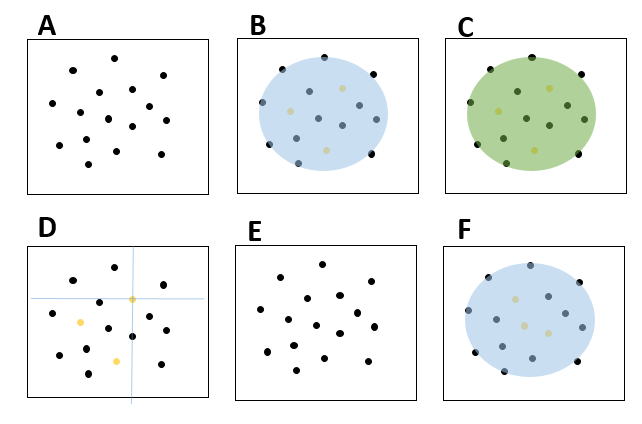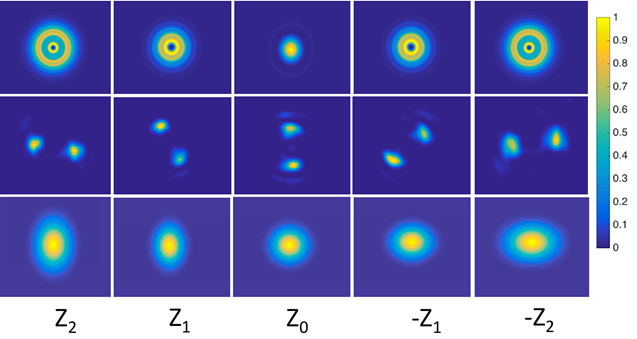PhD project - Sohaib Abdul Rehman
Super resolution beyond the coverslip
Resolution of a light microscope is fundamentally limited by the diffraction limit of light to around 200-300 nm, hindering the study of biological phenomenon below that scale. Localisation microscopy overcomes the diffraction limit by resolving molecules, within the diffraction limited region, in time as shown in Figure 1. Moreover, combining localisation microscopy with asymmetric point spread functions (PSFs) such as double helix and astigmatism (Figure 2) can provide information about axial position of emitters over 5-6 µm range, which significantly reduces the imaging time.
Since localization microscopy involves collecting weak signals from point emitters, refractive index mismatches within biological samples affects localization precision and accuracy by introducing various optical aberrations. I am working on characterisation of these aberrations under different imaging conditions and exploring techniques to image deep in thick samples by overcoming aberrations. Moreover, I am also interested in exploring localisation algorithms for 2D and 3D PSFs.


